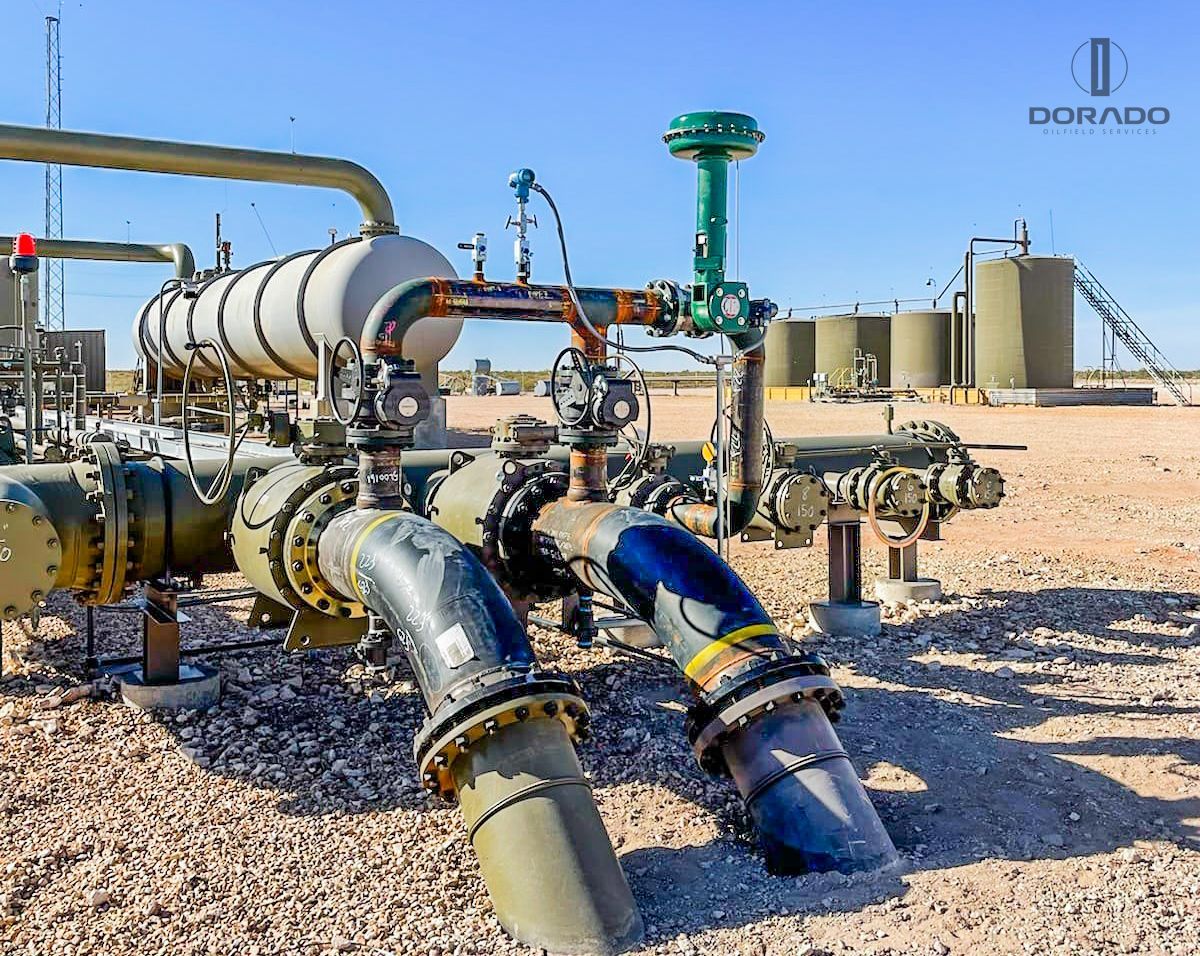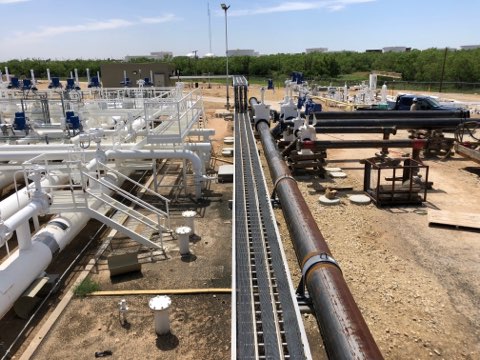How Pipeline Construction Services Use Technology to Improve Efficiency
Wiki Article
Discovering the Latest Developments in Pipeline Construction Services for Modern Projects
The Pipeline Construction market is going through considerable changes. Developments such as clever products and robotics are reshaping conventional techniques. These improvements guarantee to improve effectiveness and security. Additionally, AI modern technologies are enhancing task monitoring capacities. As these components merge, they question concerning their lasting effect on sustainability and cost. Recognizing these advancements is vital for stakeholders looking to browse this advancing landscape. What effects do they hold for future jobs?The Rise of Smart Materials in Pipeline Construction
As the need for more reliable and lasting Pipeline systems increases, the combination of clever materials has emerged as a transformative service in Pipeline Construction. These innovative materials possess distinct residential properties that enhance the efficiency and longevity of pipelines. For circumstances, self-healing polymers can immediately repair small leaks, substantially lowering maintenance expenses and downtime. In addition, products installed with sensing units can monitor architectural honesty and environmental problems, allowing for real-time data collection and analysis.Wise products are typically lightweight and corrosion-resistant, which not just streamlines installment however likewise expands the life-span of the systems. Their flexibility makes it possible for pipes to hold up against severe ecological conditions, advertising security and reliability. As markets increasingly prioritize sustainability, the usage of environmentally friendly smart materials adds to lowered environmental impact. In general, the rise of smart materials notes a noteworthy change in Pipeline Construction, leading the way for ingenious remedies to fulfill contemporary infrastructure needs.
Improvements in Robotics for Setup and Upkeep
The integration of wise materials in Pipeline Construction is enhanced by advancements in robotics, which are transforming installation and maintenance processes. Robot modern technologies, such as automated welding systems and drones, enhance performance and accuracy, minimizing human error and decreasing security risks. These robotics can run in difficult atmospheres, guaranteeing that installments are carried out in remote or dangerous locations without placing employees in danger.Robotic examination devices outfitted with sophisticated sensing units supply real-time data on Pipeline honesty, allowing for positive upkeep. They can spot leakages or architectural weak points, making it possible for prompt interventions that prolong the life expectancy of Pipeline systems. The usage of robotics not just increases the Construction timeline yet also optimizes resource allowance, causing cost savings. As these technologies continue to advance, they are set to play a critical function fit the future of Pipeline Construction, guaranteeing integrity and sustainability in facilities advancement.
AI-Driven Task Management Tools Transforming Operations
AI-driven project monitoring devices are improving operations in Pipeline Construction by boosting decision-making procedures via improved access to real-time data analytics. These devices enable teams to respond promptly to project developments, consequently increasing effectiveness. Moreover, streamlined communication networks foster partnership among stakeholders, better maximizing job results.Enhanced Decision-Making Procedures

Real-Time Data Analytics
Using real-time data analytics, contemporary task administration devices revolutionize process in Pipeline Construction. These innovative devices leverage artificial knowledge to provide instant understandings into task efficiency, source allowance, and prospective threats. By constantly keeping track of key efficiency indications, teams can quickly adjust to transforming problems, maximizing labor and materials usage. The assimilation of real-time information enables even more enlightened decision-making, minimizing hold-ups and decreasing prices. Furthermore, predictive analytics can recognize trends and projection obstacles prior to they rise, enhancing total project efficiency. As a result, Pipeline Construction business that adopt these AI-driven tools can improve project timelines and outcomes, ensuring they continue to be competitive in a significantly intricate sector landscape. This development marks a considerable change toward data-centric management practices.Streamlined Interaction Networks
Reliable communication is critical in Pipeline Construction, where various stakeholders need to team up flawlessly to ensure project success. The intro of AI-driven job management devices has changed interaction channels within the sector. These devices facilitate real-time info sharing, allowing groups to accessibility updates, share records, and track development efficiently. By automating regular jobs and giving a centralized system for interaction, these advancements get rid of misconceptions and minimize delays. Boosted exposure right into job timelines and resource allocation promotes liability among group participants. Furthermore, AI analytics can determine potential interaction spaces, guaranteeing positive analytic. Inevitably, structured interaction channels not only boost process yet also raise total project performance, making it possible for Pipeline Construction firms to meet contemporary needs effectively.Improved Safety Procedures Through Innovation Combination
The combination of technology in Pipeline Construction has actually brought about enhanced security procedures. Real-time surveillance systems, wearable safety gadgets, and automated threat analyses are currently important components in reducing dangers on work sites. These technologies not just improve worker safety but additionally improve compliance with industry policies.Real-Time Tracking Solutions
Exactly how can real-time surveillance systems transform Pipeline Construction safety protocols? By integrating advanced innovation, these systems provide constant surveillance of Construction activities, making sure instant detection of potential risks. Cameras and sensors can check ecological problems, devices efficiency, and workforce movements, supplying critical data in real time. This proactive strategy enables project managers to identify dangers before they rise, considerably improving precaution on-site. In enhancement, real-time tracking helps with conformity with governing requirements, ensuring that safety and security requirements are met continually. The capacity to examine data immediately supports enlightened decision-making, allowing prompt interventions. Because of this, Pipeline Construction tasks can run much more effectively while safeguarding the health of workers and lessening accidents, thereby transforming the market's safety and security landscape.Wearable Safety Instruments
Frequently, wearable security devices are being integrated right into Pipeline Construction to why not check here enhance safety procedures. These innovative tools, consisting of smart helmets, vests, and wristbands, are made to keep track of employee health and wellness and ecological conditions original site in real-time. Furnished with sensing units, these gadgets can spot dangers such as poisonous gas exposure, extreme warm, or high noise levels, providing instant informs to supervisors and workers. Furthermore, wearable innovation often includes GPS monitoring attributes, permitting for effective place tracking of workers on-site. This ability not only aids in quick reaction throughout emergency situations but likewise enhances overall task administration. By prioritizing worker safety and security via innovation combination, Pipeline Construction companies are making significant strides in reducing accidents and advertising a culture of safety within the sector.
Automated Threat Assessments
While conventional risk evaluations often count on hands-on examinations, the integration of computerized threat analysis technologies is changing security procedures in Pipeline Construction. These sophisticated systems leverage data analytics, synthetic intelligence, and machine understanding to recognize prospective risks much more precisely and successfully. By continuously checking ecological conditions, equipment status, and worker actions, automated analyses supply real-time understandings that enhance decision-making. This aggressive technique lowers the chance of mishaps and improves compliance with safety and security policies. Furthermore, automated risk analyses can be upgraded immediately, making certain that all stakeholders have access to the most recent details. Therefore, Pipeline Construction tasks benefit from a safer workplace, minimizing disturbances and promoting a culture of safety and security with technology combination.Lasting Practices in Pipeline Construction
As the need for energy infrastructure climbs, the Pipeline Construction sector significantly prioritizes sustainable practices that reduce environmental effect. Firms are taking on green materials and advanced Construction techniques to reduce their carbon footprint. For circumstances, making use of trenchless innovation permits for Pipeline installment with minimal interruption to the surrounding atmosphere, reducing and preserving all-natural environments soil disintegration.
Furthermore, the execution of renewable resource resources, such as solar or wind, to power Construction activities is getting traction. This change not only reduces dependence on nonrenewable fuel sources yet additionally improves the overall sustainability of Pipeline jobs. Efficient waste management methods, including reusing and reusing products, are becoming standard in the sector.
Real-Time Monitoring and Anticipating Upkeep Solutions
The change towards lasting practices in Pipeline Construction has paved the way for the combination of real-time surveillance and predictive upkeep options. These innovations leverage advanced data and sensing units analytics to constantly analyze Pipeline integrity and operational effectiveness. By gathering information in real time, operators can find anomalies such as leakages or stress drops before they escalate right into major problems. This aggressive technique not just lessens ecological threats however also minimizes downtime and upkeep costs.Predictive upkeep utilizes algorithms to anticipate possible failures based upon historic data and current efficiency metrics. This enables prompt interventions, optimizing upkeep routines and resource allowance. In general, real-time surveillance and anticipating upkeep remedies represent a considerable advancement in Pipeline Construction, enhancing safety and security and integrity while sustaining sustainability objectives. As industries remain to accept these innovations, the operational landscape of Pipeline monitoring is readied to develop dramatically, making sure lasting feasibility and performance.
The Role of Drones in Surveying and Inspection
Drones have become transformative tools in the checking and evaluation of pipelines, supplying enhanced performance and precision. Their capacity to catch high-resolution photos and videos from various angles enables extensive analyses of Pipeline integrity without taking the chance of human security. Furnished with sophisticated sensing units and thermal imaging abilities, drones can detect leaks, rust, and architectural anomalies that might not show up to the naked eye.The release of drones substantially decreases inspection time, making it possible for quicker decision-making for upkeep and repair work. This effectiveness translates to cost savings and marginal disruption to surrounding settings. Drones can also access hard-to-reach locations, such as elevated frameworks or sturdy surfaces, further More hints broadening the extent of evaluations.
As the Pipeline sector continues to embrace technological innovations, the combination of drones into evaluating and evaluation processes is anticipated to grow, setting new requirements for operational quality and safety in Pipeline Construction services.
Frequently Asked Questions
What Are the Expenses Related To Modern Pipeline Construction Innovations?
The prices connected with modern-day Pipeline Construction developments usually consist of innovative products, specialized labor, and cutting-edge innovation. These elements contribute to higher initial investment, but can result in lasting savings with improved efficiency and lowered maintenance requirements.Exactly How Do Regulatory Changes Impact Pipeline Construction Technologies?
Regulative changes substantially influence Pipeline Construction technologies by necessitating the fostering of much safer, much more efficient techniques. Compliance requirements often drive technology, leading to advancements in products, style, and Construction techniques that enhance total job sustainability and safety.What Abilities Are Required for Occupations in Advanced Pipeline Construction?

Occupations in advanced Pipeline Construction need experience in design principles, project administration, safety and security protocols, and ecological regulations. Furthermore, abilities in modern technology integration, team effort, and analytic are vital for traversing the intricacies of contemporary framework tasks.
Exactly How Can Companies Guarantee Compliance With Environmental Specifications?
To guarantee compliance with ecological criteria, companies ought to apply rigorous training programs, conduct regular audits, and adopt finest methods in sustainability. Involving with stakeholders and monitoring regulatory modifications better strengthens their dedication to ecological stewardship.
What Are the Key Difficulties Encountering Pipeline Construction Today?
The crucial difficulties facing Pipeline Construction today include regulative conformity, ecological concerns, changing product prices, labor shortages, and the need for innovative technology combination (Pipeline Construction Services). These elements make complex job timelines and total performance in the marketAs the demand for much more effective and lasting Pipeline systems boosts, the integration of clever materials has actually arised as a transformative option in Pipeline Construction. AI-driven job management devices are improving operations in Pipeline Construction by boosting decision-making procedures via better accessibility to real-time information analytics. While job administration in Pipeline Construction has generally depended on manual procedures, the combination of advanced tools significantly enhances decision-making capabilities. Utilizing real-time data analytics, modern-day job administration tools revolutionize workflow in Pipeline Construction. Jobs in sophisticated Pipeline Construction need knowledge in engineering concepts, project monitoring, safety and security procedures, and environmental laws.
Report this wiki page